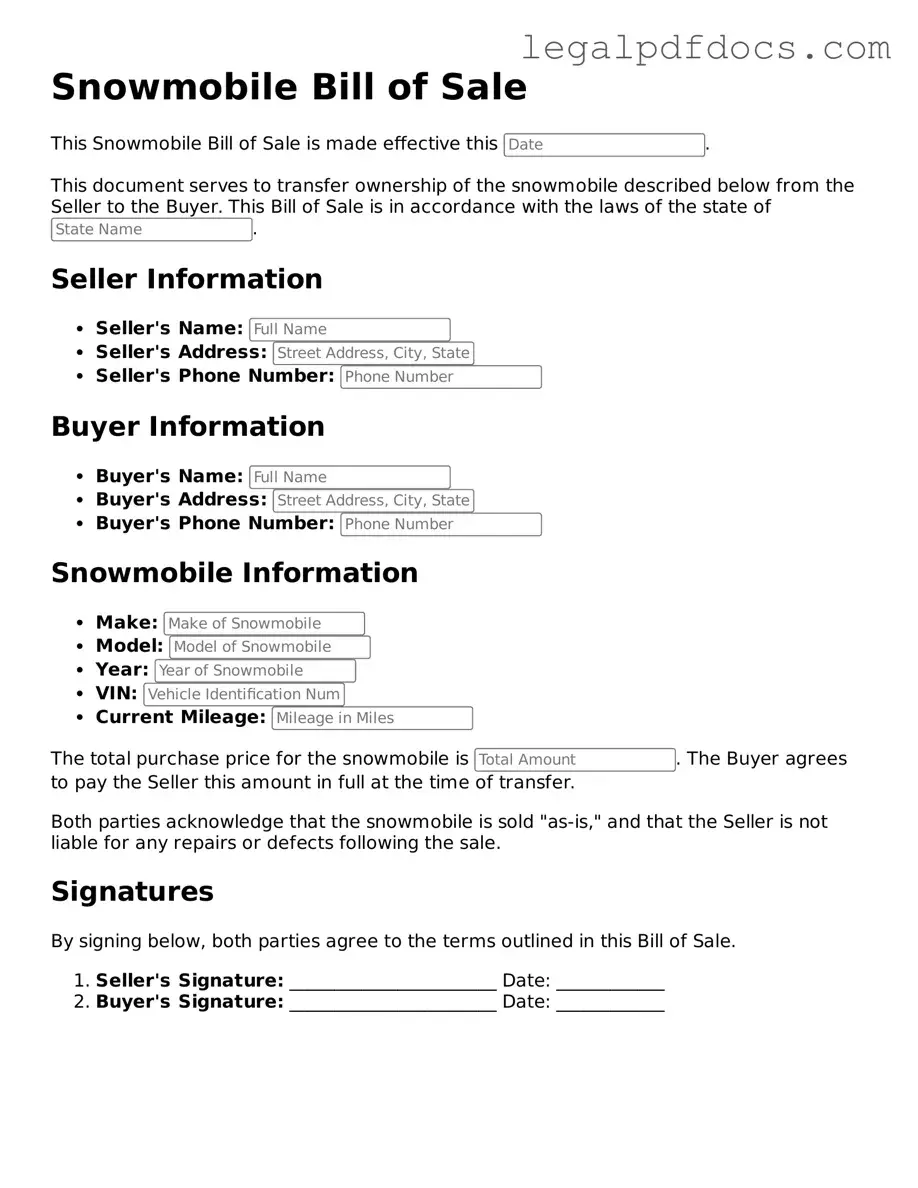Snowmobile Bill of Sale Template
A Snowmobile Bill of Sale form is a legal document that records the transfer of ownership of a snowmobile from one party to another. This form serves as proof of the transaction and includes important details such as the buyer's and seller's information, the snowmobile's description, and the sale price. Completing this form is essential for both parties to ensure a smooth transfer and to protect their rights.
Ready to fill out your Snowmobile Bill of Sale? Click the button below!
Open Snowmobile Bill of Sale Editor Here
